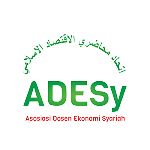Additional Menu
R-W-C-R-R Policy
ARTICLE RETRACTION
At Journal of Islamic Economic and Business Research, we have a commitment to maintaining the integrity of the academic record, so there are times when there is a need to retract articles. An article would be retracted for the following reasons:
- If there are major scientific errors, that will invalidate the article conclusion. An example is when there is evidence that that the findings in the article is unreliable either due to an honest error a miscalculation or experimental error or as a result of misconduct data fabrication.
- If the research and resulting findings have already been posted elsewhere without appropriate cross-referencing, justification, or permission the case of a redundant publication.
- If there are plagiarism issues the use of the words used in another publication without giving credit or inappropriate authorship.
To make sure that retractions are handled to the best practice of publications, and also in accordance with COPE retraction guidelines, Journal of Islamic Economic and Business Research make use of the following retraction process:
- Any article which requires potential retraction should be brought to the notice of the journal editor.
- Once this is done, the journal editor would follow the guidelines according to the COPE flow chat this includes the evaluations of the answers given by the author of the article t certain questions.
- The editor's findings are then sent over to the Ethics Advisory Board before any action can be taken. This step is put in place to ensure a consistent approach to these situations in accordance with the best practices of the industry.
- The decision on whether or not the publication is going to be retracted or not is communicated to the author and other relevant bodies such as the Author's institution if necessary.
- When all this is concluded, a retraction statement is posted online and then published in the next available issue of the journal we are going to be giving detailed information on this step as we move on.
Note: if the author retains copyright for an article, this does not qualify them for the right to retract it after publication. The integrity of the public scientific record is important, and COPE's Retraction Guidelines still apply in such cases.
ARTICLE WITHDRAWAL
It is not in the jurisdiction of an author to withdraw a submitted manuscript. This is because referees, editors, and publishers have spent a lot of time editing and processing the submitted manuscript leaving the sudden retraction a waste of valuable resources. Before an author submits a manuscript, through our OJS, the author is required to provide the following checklist:
- If the author requests the removal or withdrawal of his/her manuscript when it is still in the peer-reviewing process, there would be a fine of $150 USD per manuscript.
- If the author wants to withdraw the article after being accepted for publication, the author would be asked to pay $200 USD per manuscript.
- If the article has been published as Article in Press articles which have accepted for publication although not formally coming without the complete package that has errors, or has violated the Journal publishing ethics guideline as viewed by editors, or has been discovered to be a duplicate to another published article, or maybe it has been Withdrawn from the Afkaruna website. The author would be fined a total of $250 USD per manuscript. The term "Withdrawn" means that the article's content has been replaced with a PDF of HTML page stating that the article has been withdrawn.
- If the author refuses to pay the penalty at any point, the author, alongside any affiliation linked to him/her, would be blacklisted for publication for three years.
- If there is a request to withdraw a manuscript by the author, an official letter signed by the corresponding agency leader and the author must be sent to the Principal Editor.
ARTICLE CORRECTION
Issuing a correction is considered by Journal of Islamic Economic and Business Research if the following happens:
- A small section of a reliable publication reports flawed data, which misleads due to an honest error.
- The Contributor list or Author is incorrect (e.g., a deserving author has been omitted, and likewise, a person who is not worthy of authorship criteria has been included.
Corrections to peer-reviewed content fall into one of these three categories:
- Publisher correction (erratum): this helps to notify readers of a major error made by a publishing staff that negatively impacts a publication record or the scientific veracity of the article, or the reputation of the Journal or authors.
- Author correction (corrigendum): this also helps to notify a reader of an error made by an author, which negatively impacts the scientific integrity of a publication record or the reputation of the author of the journal.
- Addendum: this is where there is an addition to the article by the author to explain inconsistencies and expand the existing work or explain or update the information in the main work.
Deciding whether a correction should be issued is made by the editor of a journal, and this sometimes comes with advice from Reviewers or Editorial Board Members. Handling Editors would contact the Authors of the concerned paper with a clarification request, but the final decision on a correction is required, and if so, which type rests on the editors.
ARTICLE REMOVAL
There might be a need to remove a published article from an online platform in a limited number of cases. This would only occur if an article is defamatory or infringes the legal rights of others, or we have good reason to believe that the publication would cause certain court orders. In such situations, while the metadata of the article will be retained, the text would be will be replaced with another screen, which points out that the article has been removed to prevent any legal complications.
ARTICLE REPLACEMENT
At a point, an author of an original paper may wish to remove or retract the flawed original and replace it with another corrected version. Under these circumstances, the retraction procedure would be followed, with the difference stating that the article retraction notice would contain a link to the corrected re-published article alongside the history of the document.




